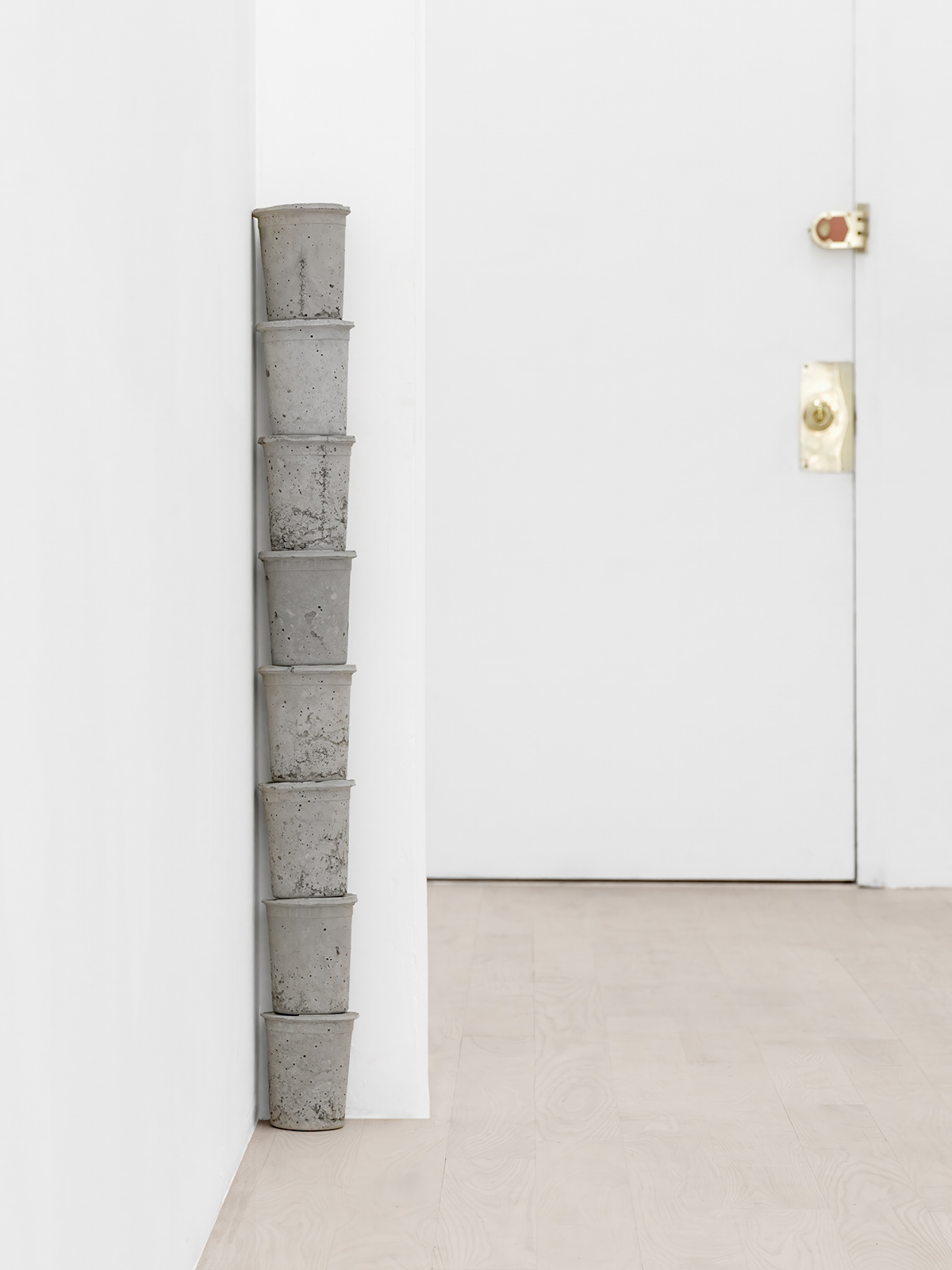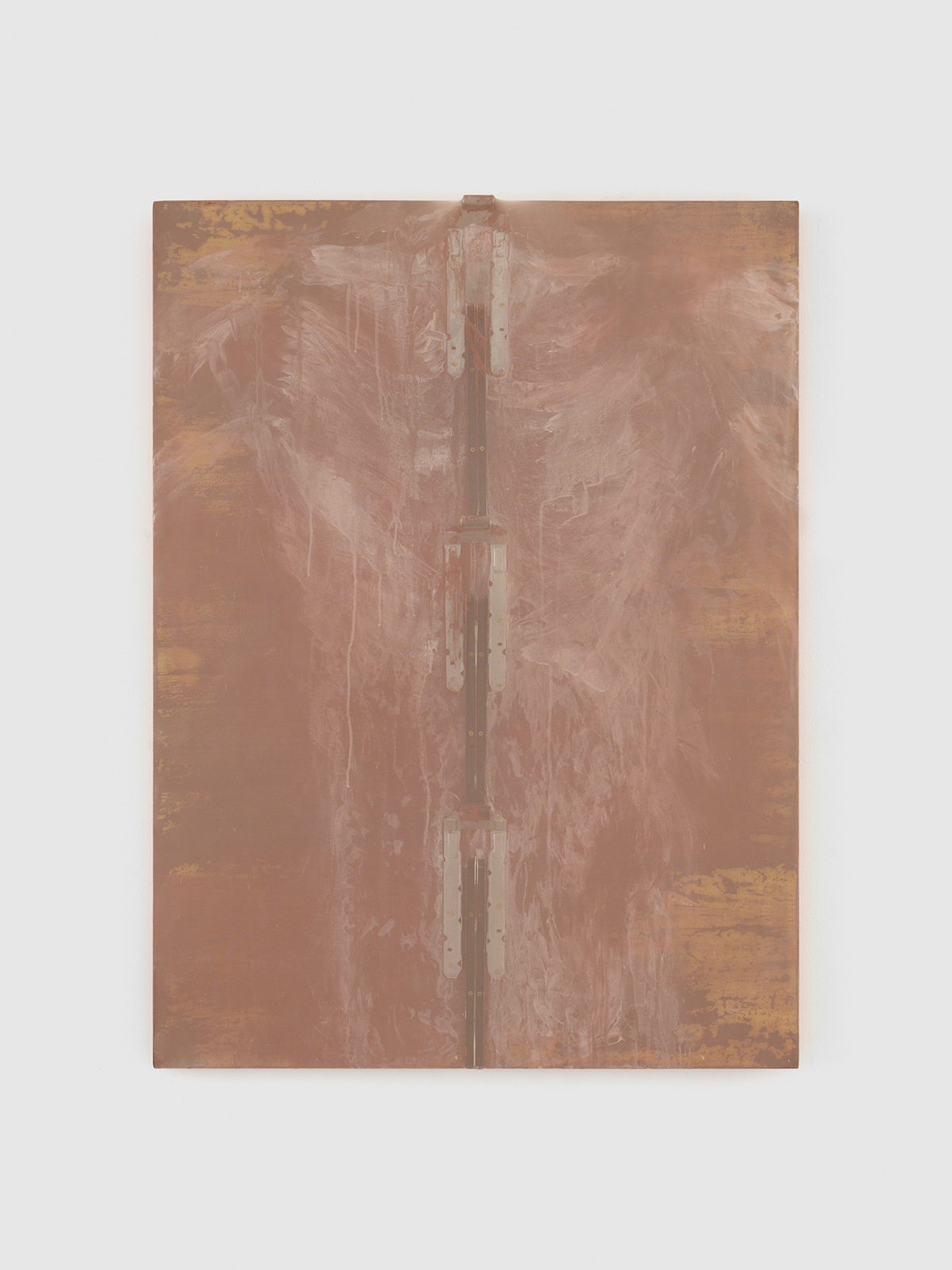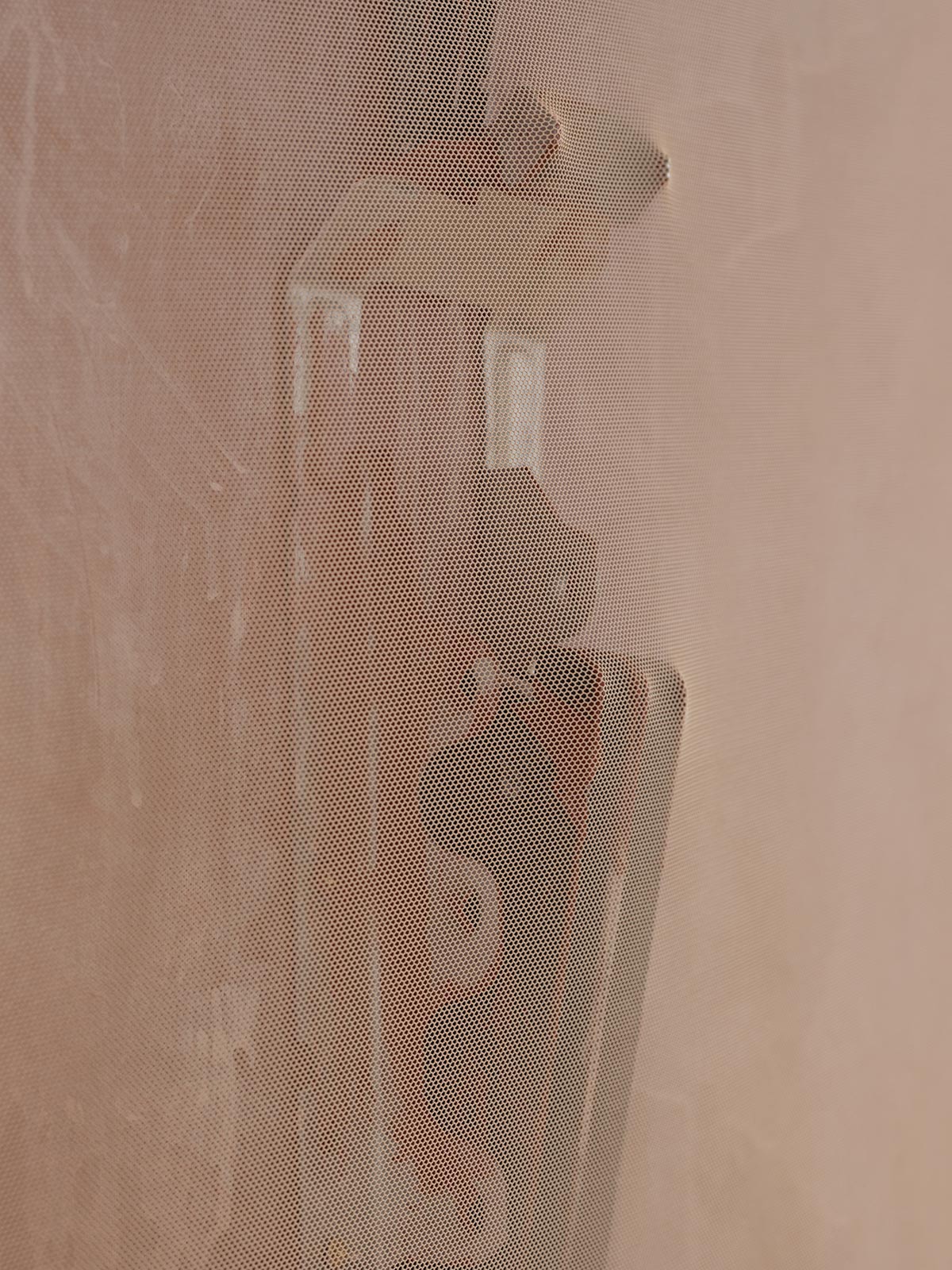On view at Chinatown’s Management gallery, the artist’s debut solo show centers construction and deconstruction on the city streets and within the self
Something is always being built in New York City. Buildings go up, they’re torn down, they’re adorned with scaffolding. Their structures vibrate with jackhammers punching concrete and power tools splitting walls from their support beams. Construction’s sight and sound is a constant reminder that to build means to eventually tear down, rebuild, tear down again, and so on and so forth.
Artist Tahir Karmali reimagines this infrastructure lifecycle in Eternal Rent, his debut solo show on view at Chinatown gallery Management until October 20. Through a series of wall-mounted and freestanding sculptures that riff on materials often found at a construction site like high-visibility Duck canvas and metal joists, Eternal Rent highlights the constant states of construction and reconstruction of the city as a metaphor for the fear and wonder required to transform as a person. “While I was creating this show I was also reassessing my relationship to my body and specifically substance abuse,” says Karmali. “During this period, I experienced a lot of turmoil and discomfort in my body and that translated visually in the artwork.”
Karmali’s wall-mounted works explore these themes quite literally, featuring fabrics and canvases washed with traditional soil dyes as well as milk, blood, and in two works, cocaine. You turned me into a weapon I cannot control is a six-foot-tall stretch of indigo denim dyed in a randomized pattern reminiscent of tie-dye appears almost bodily, with little rust-colored veins settling at the bottom of the sky-blue clouds of color. Up close, the colors appear to sparkle with the faintest crystalline transparency. “Eternal Rent deals with the extremes that we put our bodies through for work and recreation. I thought it fitting to have cocaine’s presence in the work even though it isn’t immediately apparent,” continues Karmali.
Mounted on the wall nearby is a spine-like metal structure from which hang three second-hand cotton shirts tinted red with traditional fabric dye in addition to oxidized iron dye from guns, surrounded by a row of deep maroon beeswax candles shaped like bricks. The shirts are unbuttoned as if to show their insides. I want to caress my face with sandpaper, break my jaw, and forget who you were and I tore my collar and split my spine apart so you can see me again are sibling works that expand upon this theme, integrating high-visibility nylon, power mesh, and metal joists to give the appearance of bones protruding through the wall they’re hung on. “I am always conscious about how fabrics are presented to us socially and I like how quickly people can relate to or judge them,” says Karmali. “Hi-vis in this instance is commonly seen in construction. Coupled with the bodily elements, it is used to refer to the constant deconstruction and construction of self.”
In Eternal Rent, to construct a building is to later decimate it to make room for something new as to grow and change on a personal level is to flay yourself as a means to repair it later. From a standpoint equally as vulnerable as it is visceral, the exhibition’s subtitle says it best: A city like a body, a bone like a brick, the psyche your sewer. Rent. It’s happened, happening to you.

















